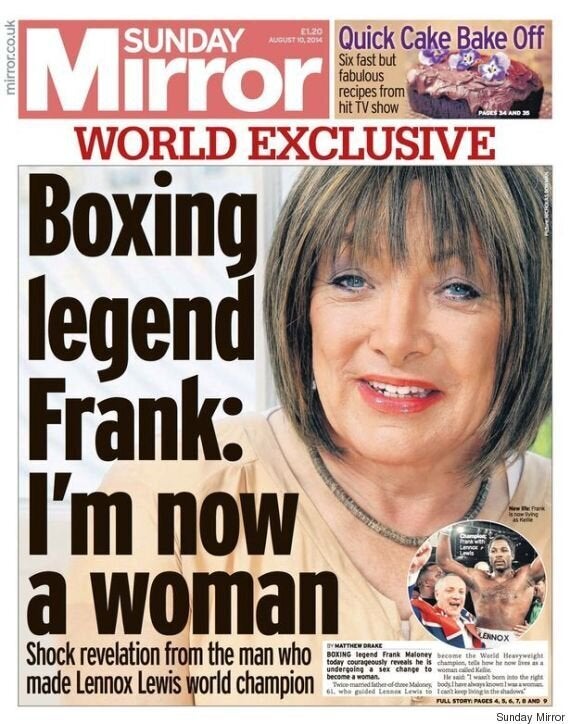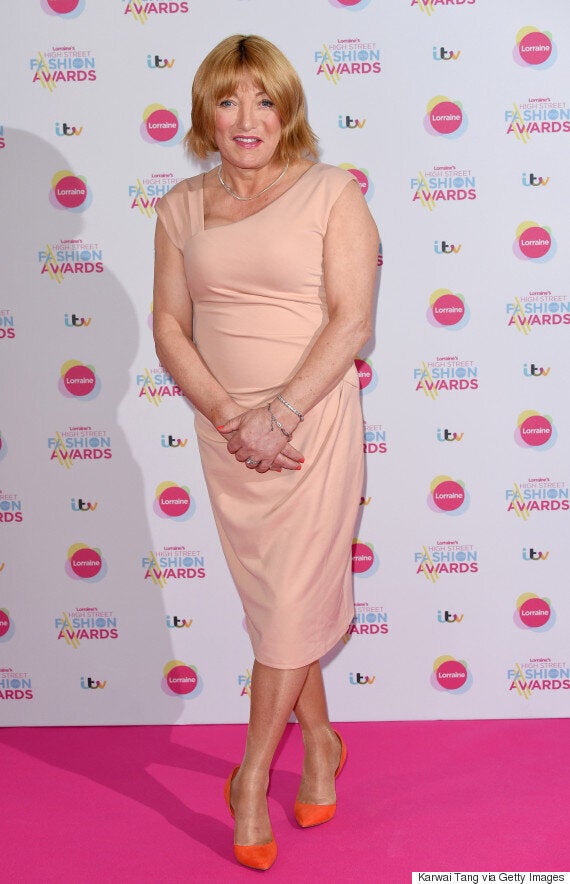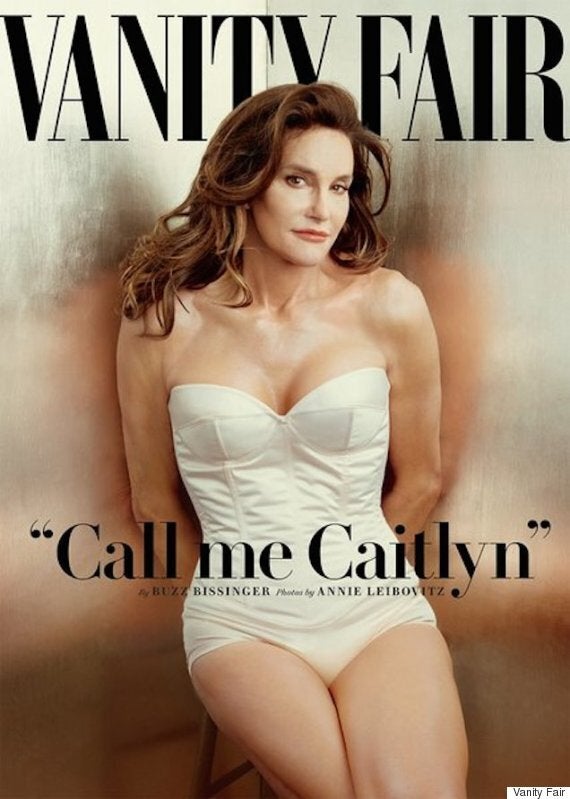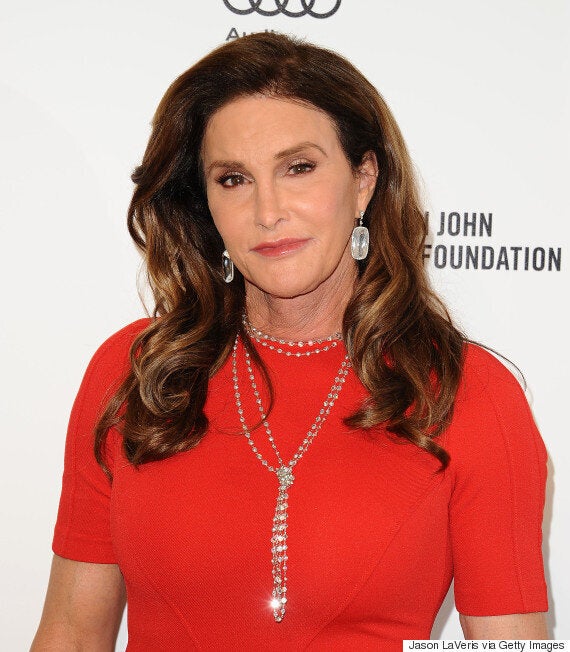
Transgender issues have taken a step to the forefront of people’s minds in recent years but, in 2015, it was undeniable that things sped up considerably, largely thanks to the prominence of several key figures in the world of entertainment and celebrity. Primarily, Kellie Maloney and Caitlyn Jenner, whose very public journeys have educated and informed, have helped others better understand issues related to gender identity, and what it means to be transgender in the current climate.
In the summer of 2014, fictional female characters such as Blessing Chamber in ‘Hollyoaks’ (portrayed by cisgender actress Modupe Adeyeye) and Sophia Burset in ‘Orange Is The New Black’ (a role which has helped make Laverne Cox one of the Netflix series’ most popular stars) made big steps in introducing more trans characters to popular shows. And then, one of the year’s biggest news stories helped take things into reality.
Kellie Maloney - who, prior to coming out, had lived her life in the public eye as boxing coach Frank Maloney - came out as transgender in an interview with the Sunday Mirror in August that year. Before revealing her trans status, there had been no media speculation, so it was a shock to those who had followed her sporting career for decades.
The interview, of course, featured numerous unhelpful and sensationalist tropes. The headline contained the “quote” ‘I’m A Woman Now’, as if it were a decision as easy and flippant as getting a job in the post office, or having your hair dyed (‘I’m A Blonde Now’ would be an acceptable headline, ‘I’m A Woman Now’, not so much). Underneath that, we were told that Kellie was ‘the man who made Lennox Lewis world champion’, despite her literally identifying as a woman two and a half seconds earlier.

Kellie Maloney's first interview with the Sunday Mirror
Kellie’s interview may have seemed like it set out to sensationalise (she’s since said herself the only reason she came out when she did was because a journalist from another newspaper had threatened to break the story first), but through it, and the ensuing media interest, she was able to make the best of the situation, and raise the public’s awareness of transgender issues.
Through being in the public eye under extraordinary circumstances, Kellie was able to talk about the suicidal feelings she had felt before coming out as trans, and how she came through that. She could talk freely about how her family, her children, her mother, even her ex-wife, were coping with her new life. She could joke about how she was adapting to being out, the mistakes she was making, the lessons she was learning.
The public seemed to be on her side - just eight days after her coming out she arrived in the ‘Celebrity Big Brother’ house and was immediately named the favourite to win, entering the house to a sea of cheers while others received mixed and occasionally negative reactions - but the reporting surrounding Kellie’s story wasn’t always as tasteful as it could have been.

Kellie attending last year's High Street Fashion awards
In the weeks that followed, we saw references in tabloid newspapers to her ‘sex swap’. SEO-chasing headlines continued to refer to her by her male name (despite all media guidelines insisting on keeping trans people’s old names to a minimum), and repeated use of the term ‘transsexual’ to describe Kellie (a label which Kellie herself has actually admitted does not offend her, but which other trans people have taken issue with). The media coverage tended to focus heavily on the surgery she’d undergone, and the surgery she intended to undergo. Again, this information was usually freely submitted, but this is an aspect that continues to be all too often, wrongly, the focus of discussions.
Less than a year later, Caitlyn Jenner’s story started in a rather different way as, prior to her transition, she’d been the patriarch of the most famous family in the world.
While Kellie Maloney’s coming out seemed to appear from nowhere, Caitlyn’s global popularity and high profile meant it was impossible for her to make her transition privately. In the months - years, even - beforehand, speculation had been rife over Caitlyn’s transgender status, often so insensitive it’s difficult to imagine it was from as recently as this decade, let alone less than a year ago.
Close-ups of her painted nails, hear-say about the clothes she’d begun wearing in private, presumably made-up quotes about her children and stepchildren - not to mention ex-wife Kris Jenner - “coping” with the transition. It seemed nothing was above commenting on, over an issue that people didn’t even have confirmation was actually happening.
By the time Diane Sawyer’s two-hour interview with Bruce Jenner (as Caitlyn was still known worldwide at this stage) was announced, everyone had a pretty good idea what the main theme was going to be. And Bruce took the questions as they came; about surgery, why he was continuing to use male pronouns for the time being, about whether he’d be dating men or women in the future, about the effect his coming out was going to have on everyone around him.
The story was everywhere.
And then Bruce did something it’s still difficult to imagine a member of the Kardashian/Jenner family was successfully able to do. He disappeared. When he returned months later (we'll follow his lead here on pronouns), it was on the cover of Vanity Fair. And that’s when we were introduced to Caitlyn.

Caitlyn Jenner makes her debut on the cover of Vanity Fair
With a bit more time for journalists - in general, but specifically those who were used to regularly reporting on the goings-on of the Kardashian household - to prepare and read up, the coverage around Caitlyn’s coming out as trans appeared a lot more responsible.
But even though Caitlyn’s star was on the rise, and gaining speed (within days she’d been named the recipient of the courage prize at the ESPY Awards, going on to be named Social Media Queen at the Teen Choice Awards and one of Glamour’s Ultimate Women Of The Year), the reaction in the trans community told a different story, for a number of reasons.
Some trans activists have voiced their frustrations at Caitlyn’s privileged background, compared to those of other everyday men and women who have to transition without the resources that the former Olympian’s background has made accessible to her - as well as her conservative views, and unrelenting support for the US Republican party, despite its history of anti-LGBT policies.
The backlash came to a head back in November last year, five months after introducing herself as Caitlyn, when frustrated protesters demonstrated outside an event where Caitlyn was speaking, insisting she should be doing more to help out those in the community.
One protester wrote on Facebook at the time: “I support [Caitlyn] as trans, but I won't support her as an act of bravery for transitioning in the public's eye, while millions are homeless for identifying, dead, or dying because they have to do damn near anything just to find a place to sleep at night.
“Those are the folks that I pray respect and support my direct advocacy for humanity and dignity for all. Everyone can be productive if given a chance and left alone to figure it out.”

Caitlyn Jenner has proved to be a polarising public figure among trans people
Of the media coverage surrounding Caitlyn, Helen Belcher from the charity Trans Media Watch tells HuffPost UK: “All I think it shows is that if you actually have a million dollars it's easy to look like a million dollars and meet people's expectations.”
She continues: “I think the overall picture is positive. However the media has a terrible tendency to pick on one or two people, generally newly-transitioned, as mouthpieces for the entire set of communities. Caitlyn and Kellie almost instantly became the ‘go-to’ people and their story becomes the ‘standard narrative’.
“My experience, and I believe the experience of others, is that you learn a lot for some time after transitioning. You wouldn't go to a new member of a political party to get some in-depth thinking about a range of political issues. The problem with the media focus is that it also means that folk can struggle to change their minds on certain issues or adapt their thinking.”
While Caitlyn has attempted to bring the issues that face trans people - and, in particular, trans women - to the forefront, on her E! reality show, ‘I Am Cait’, it has been claimed that these have been eclipsed by her celebrity status and the Caitlyn Jenner brand.
Instead, Helen has some suggestions for issues that face real trans people, which are still being overlooked.
She adds: “The whole medicalisation of trans needs some urgent attention, especially with the disastrous waiting lists and under-resourcing within the NHS. Quite a few folk are desperate by the time they talk to a medic, so to put your life effectively on hold for up to two years while the system chugs its way through is extremely damaging and wasteful.
“The issues facing those children who identify as trans also needs some attention. There is concern over the way that the state polices your gender, and demands that you prove it's changed at your cost, and then places trans people as subsidiary to their spouses when it comes to gender recognition.
“The chronic underfunding of trans charities is also a massive problem - most are volunteer-led and can quickly burn people out. And there's also trans people and business systems - lots of computer systems simply can't cope with the concept of an individual changing name or changing gender, or even the use of unusual titles; while lots of organisations ask really inappropriate questions when confronted with a trans person who wants to change their details.”
While Caitlyn Jenner was still firmly planted in the public consciousness, Rebecca Root was the next transgender woman to be put in the spotlight here in Britain, with the small difference that she made her public debut as a trans woman, rather than having to come out in the full glare of the media.
Instead, Rebecca - a relative unknown - bagged the lead in the sitcom ‘Boy Meets Girl’, a new BBC sitcom with transgender themes at its core, but which is ultimately an unlikely love story about an older woman, a younger man and their two eccentric families in the North East of England.

Rebecca Root is the lead actress in the BBC sitcom 'Boy Meets Girl'
Speaking about the future of trans visibility in the media, Helen from Trans Media Watch explains: “Trans characters are usually foregrounded - in that their trans-ness is the basis of the story. We at Trans Media Watch were pleased to see that Ed Vaizey MP, the culture minister, agreed with our assessment that soaps and dramas should start to include characters who just happen to be trans.
“Having said that, ‘Boy Meets Girl’, while not perfect, does introduce a trans character into people's living rooms in a way which is probably unusual. I suspect that most people wouldn't have thought about trans people forming relationships. So the drama does a different thing but still adds into the general mix.”
Three months into 2016 and, it’s clear that while last year certainly played its part in increasing trans visibility, and raising awareness of the cause, there’s still a long way to go.
With a second series of ‘Boy Meets Girl’ on the way, ‘Hollyoaks’ welcoming British soap’s first trans character actually played by a trans woman and ‘EastEnders’ having now introduced British soap’s first transgender male character, there are now more opportunities than ever before for the UK media to tell trans’ people’s stories sensitively and accurately.
Perhaps more crucially, viewers to whom figures like Kellie and Caitlyn would be less accessible, will be able to welcome these characters into their living rooms night after night, and get to understand them - and the real-life people they represent - a little better, particularly when their storylines are able to evolve past their gender identities.
Kellie Maloney and Caitlyn Jenner may well have generally received acceptance from the public when they came out as trans, but that’s clearly far from the end of the story.
HuffPost UK is running a month-long project in March called All Women Everywhere, providing a platform to reflect the diverse mix of female experience and voices in Britain today. Through features, video and blogs, we'll be exploring the issues facing women specific to their age, ethnicity, social status, sexuality and gender identity.
If you’d like to blog on our platform around these topics, email ukblogteam@huffingtonpost.com with a summary of who you are and what you’d like to blog about.
